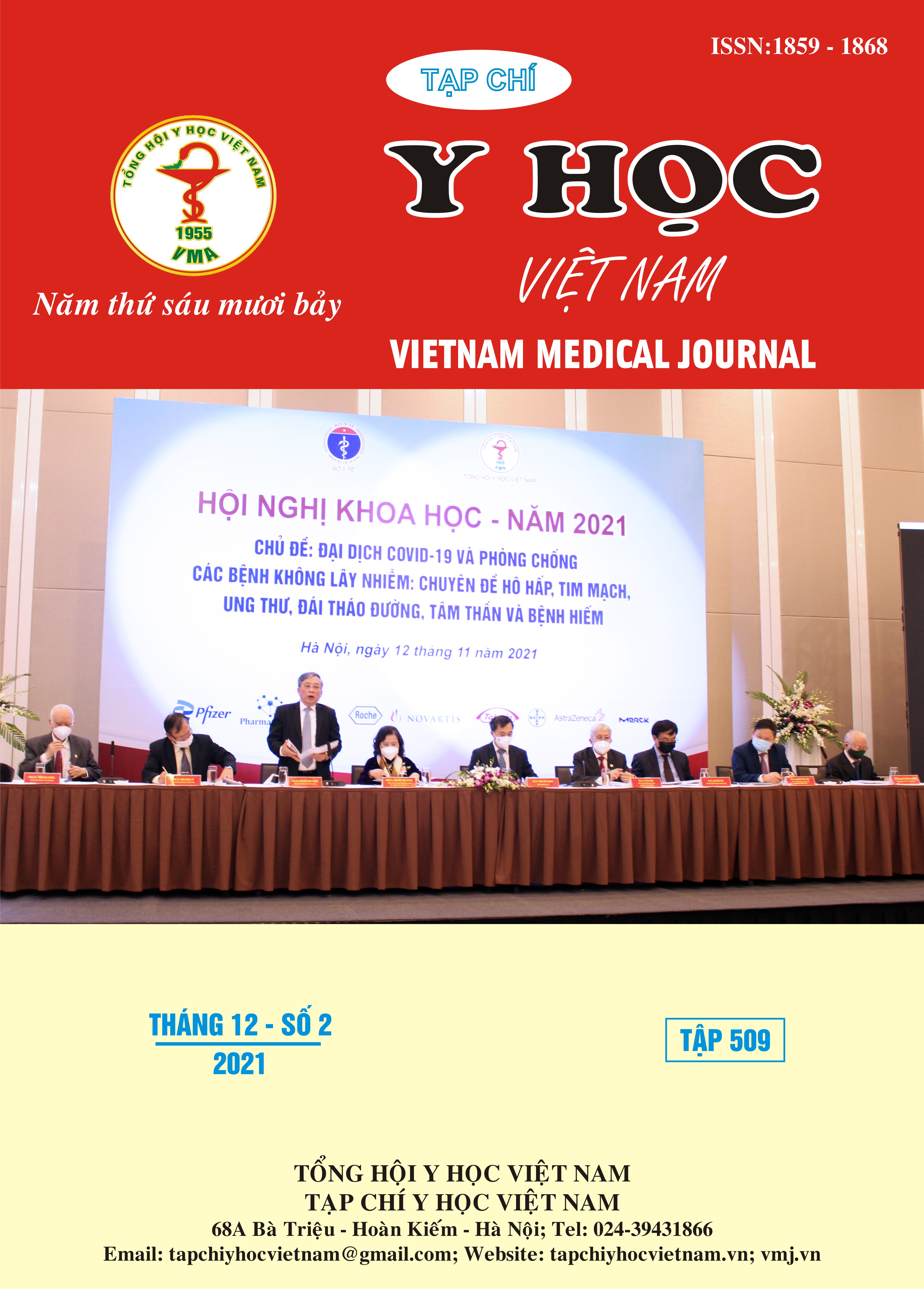SITUATION OF PRE-ECLAMPSIA, ECLAMPSIA SCREENING IN RISK GROUP AND SOME REALATED FACTORS AT HAI PHONG OF OBSSTETRICS AND GYNECOLOGY HOSPITAL
Main Article Content
Abstract
Pre-eclampsia is a complex condition that might occours during the third trimester of pregnancy and can have life-threatening consequences for the mother and fetus. Purpose: assess the status of pre-eclampsia, eclampsia screening in risk group and some related factors at Hai Phong Obstetrics and Gynecology Hospital. Subjects and methods: Pregnant women in the risk group for pre-eclampsia were examined, managned and terminated at the Hai Phong Obstetrics and Gynecology Hospital (7/2019-9/2020). Cross-sectional study. Results: of 474 caces with risk factor of pre-eclampsia, eclampsia, 306 cases were not monitored, screened, followed treatment (64,3%) and 170 cases were monitored, screened and followed treatment during pregnancy (35,7%). There are 3 cases with pre-eclampsia, accouting for 1,8%. There are 16,7% patients with age more than 40 years old who were diagnosied pre-eclampsia, the age group less than 40 has pre-eclampsia with 1,2%. There is a relationship between medical condition and pre-eclampsia with p<0,01. Conclusion: there is 35,7% pregnant women with pre-ecalpmsia risk factor when they are monitored, screened, followed treatment during pregnancy. There is a relationship between medical condition and pre-eclampsia with p<0,01.
Article Details
Keywords
screening, pre-eclampsia, eclampsia
References
2. Spencer K., Cowans N., Chefetz I., et al. (2007), "First‐trimester maternal serum PP‐13, PAPP‐A and second‐trimester uterine artery Doppler pulsatility index as markers of pre‐eclampsia", Ultrasound in Obstetrics and Gynecology: The Official Journal of the International Society of Ultrasound in Obstetrics and Gynecology, 29 (2), pp. 128-134.
3. Poon L., Kametas N., Chelemen T., et al. (2010), "Maternal risk factors for hypertensive disorders in pregnancy: a multivariate approach", Journal of human hypertension, 24 (2), pp. 104-110.
4. Parra‐Cordero M., Rodrigo R., Barja P., et al. (2013), "Prediction of early and late pre‐eclampsia from maternal characteristics, uterine artery Doppler and markers of vasculogenesis during first trimester of pregnancy", Ultrasound in Obstetrics & Gynecology, 41 (5), pp. 538-544.
5. Bodnar L. M., Ness R. B., Markovic N., et al. (2005), "The risk of preeclampsia rises with increasing prepregnancy body mass index", Annals of epidemiology, 15 (7), pp. 475-482.
6. Sohlberg S., Stephansson O., Cnattingius S., et al. (2012), "Maternal body mass index, height, and risks of preeclampsia", American journal of hypertension, 25 (1), pp. 120-125.
7. Bartsch E., Medcalf K. E., Park A. L., et al. (2016), "Clinical risk factors for pre-eclampsia determined in early pregnancy: systematic review and meta- analysis of large cohort studies", Bmj, 353.
8. Organization W. H. (1995), "Physical status: The use of and interpretation of anthropometry, Report of a WHO Expert Committee".
9. Velauthar L., Plana M., Kalidindi M., et al. (2014), "First‐trimester uterine artery Doppler and adverse pregnancy outcome: a meta‐analysis involving 55 974 women", Ultrasound in Obstetrics & Gynecology, 43 (5), pp. 500-507.


